June 19, 2025 | 06:44 GMT +7
June 19, 2025 | 06:44 GMT +7
Hotline: 0913.378.918
June 19, 2025 | 06:44 GMT +7
Hotline: 0913.378.918
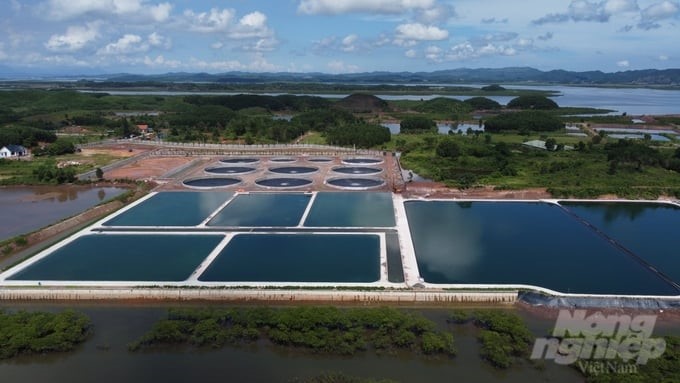
Mr. Dang Ba Manh's 6-hectare model of high-tech shrimp farming is in the stage of perfecting its infrastructure and is ready to go into production at the end of this year. Photo: Viet Cuong.
Through searching for information and learning from the southern provinces, in October 2022, Mr. Manh began to implement the construction of a 3-stage high-tech shrimp farming area in the membrane house on an area of 6 hectares of aquaculture land. Of which, 4 hectares are water treatment and storage areas, and 2 hectares are shrimp farming tanks. After nearly one year of construction, about 70% of the project volume has been built, including 12 farming tanks with an area of 500–1,000 m2/tank and 7 water storage ponds for shrimp farming.
Mr. Manh said that in order to raise shrimp successfully, the water source is the most important factor. Only with clean water can shrimp grow well and not suffer from disease. In this model, water is pumped from the sea into two storage ponds with a total width of 2 hectares, then goes through the raw water treatment system and then to the settling pond. Finally, when the water meets standards, it will be discharged into three available storage ponds with a width of 3,000 m2/pond (equivalent to 6,000 m3/pond) for shrimp farming.
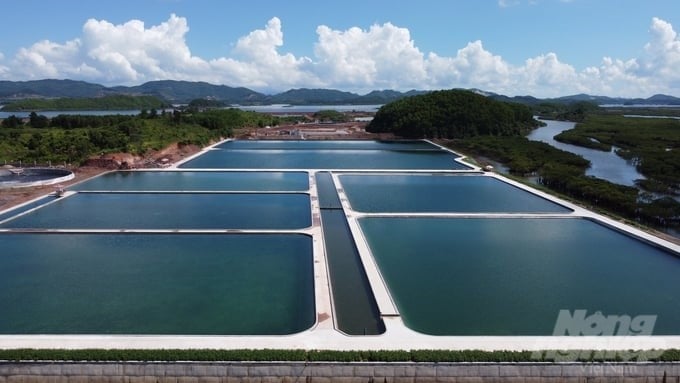
7 water storage ponds serve shrimp farming. Photo: Viet Cuong.
In addition to the factor of water source, membrane houses create a stable environment that is isolated from the outside environment, thereby helping shrimp grow better. The sunshade net prevents rainwater and covers harsh sunlight, thereby keeping the water environment stable and preventing algae from growing in the shrimp farming tank.
Besides, in order to keep shrimp healthy, HDPE tarpaulin is needed to line the farming tank, combined with other systems such as a water filtration system, an oxygen supply system for shrimp, an automatic lighting system, etc. HDPE tarpaulin is used to prevent water from seeping through soil and limit mud polluting the water source for shrimp farming. Applying lighting system technologies will help shrimp grow and better withstand unfavorable weather conditions and seasonal weather changes.
It is expected that by the end of 2023, this 3-stage high-tech shrimp farming project with an estimated investment of VND 80 billion will be completed and put into operation.
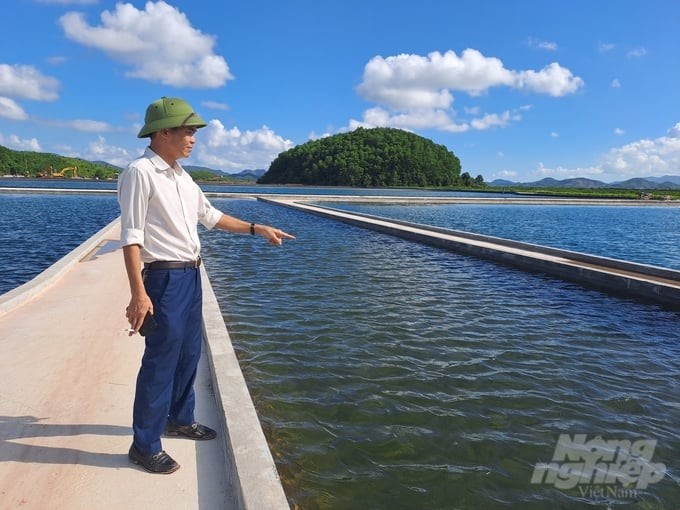
According to Mr. Manh, in order to raise shrimp successfully, the water source is the most important factor. Only with clean water can shrimp grow well, limiting disease risks. Photo: Viet Cuong.
According to Mr. Manh's calculations, in stage 1, shrimp are nursed in a covered pond, completely lined with HDPE tarpaulin. The aeration system is arranged evenly around the pond (2 m2/air grill). This stage helps limit environmental fluctuations due to weather, facilitate shrimp care and health management, reduce loss rates, and increase survival rates. At this stage, shrimp can reach a size of 1-2 g/head.
"After stage 1, shrimp will be transferred to ponds in stage 2, which are also completely lined with HDPE tarpaulin and covered, with a water level in the ponds of 1.2–1.5m. The aeration system is still spread evenly around the pond (3 m2/air grill), not in the umbilical area. The fan system in the pond has 3–5 frames, depending on the pond’s waste collection capacity and the oxygen supply efficiency of each fan frame. After being nursed, shrimp are still small but need to be raised in a larger environment, a cleaner water environment, along with a more adequate food source to help shrimp grow quickly," Mr. Manh analyzed.
On average, shrimp will be raised for 1 month in stage 1, 1 month in stage 2, and then moved to stage 3.

HDPE tarpaulin used to line the shrimp tank will prevent water from seeping through soil and limit mud polluting the water source for shrimp farming. Photo: Viet Cuong.
In stage 3, shrimp are bigger and need more space, so they will be stocked in the largest ponds, lined with HDPE tarpaulin, and covered. The aeration system and fan arrangement are the same as in stage 2 ponds. The farming density at this stage can range from 200 to 250 head/m2. After about 90 days of farming, shrimp can be harvested, reaching a size of 35–40 head/kg.
Because the farming area is close to the sea and the coastal seawater source is abundant, Mr. Manh does not use a circulating water filtration system but changes the water during the day. Water that was used for shrimp farming will be discharged into settling ponds for treatment before being discharged into the sea. Mr. Manh hopes that when his 3-stage shrimp farming model comes into operation, he will have shrimp for sale year-round and, at the same time, create stable jobs for about 50 local people.
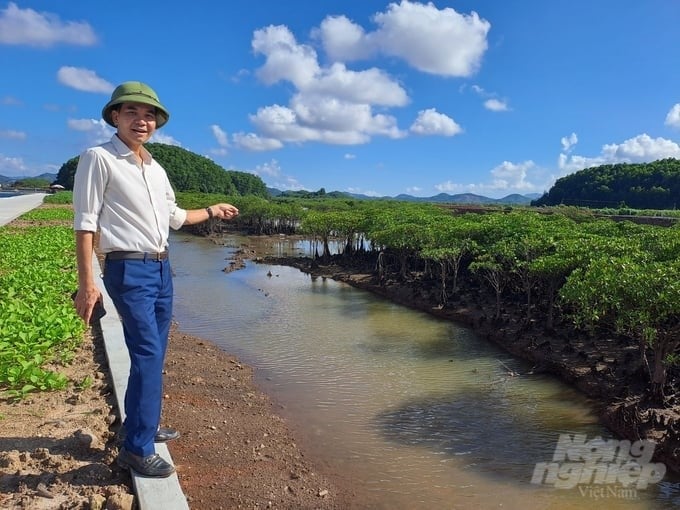
The shrimp farming area is close to the sea, and the coastal seawater source is abundant (photo taken at low tide). Photo: Viet Cuong.
Mr. Do Dinh Minh, Director of the Sub-Department of Fisheries (Quang Ninh Department of Agriculture and Rural Development), said that promoting high-tech applications in aquaculture in particular and in agriculture in general is the province’s goal towards industrializing and modernizing agriculture. Only the application of scientific advances to production can create breakthroughs in productivity and product quality, help reduce prices, and ensure clean products for consumers.
Mr. Minh suggested that individuals and businesses, when investing in high-tech shrimp farming, must ensure the locality’s planning and synchronize infrastructure systems for the sustainable development of the shrimp industry in particular and the seafood industry in general.
"This is a high-tech shrimp farming model with a huge investment in Quang Ninh. The local authority and the Sub-Department of Fisheries will advise and specifically guide legal issues; have supporting policies about loans and technical training to help Mr. Manh and other households methodically farm; and find stable output for the product to ensure sustainability," said Mr. Minh.
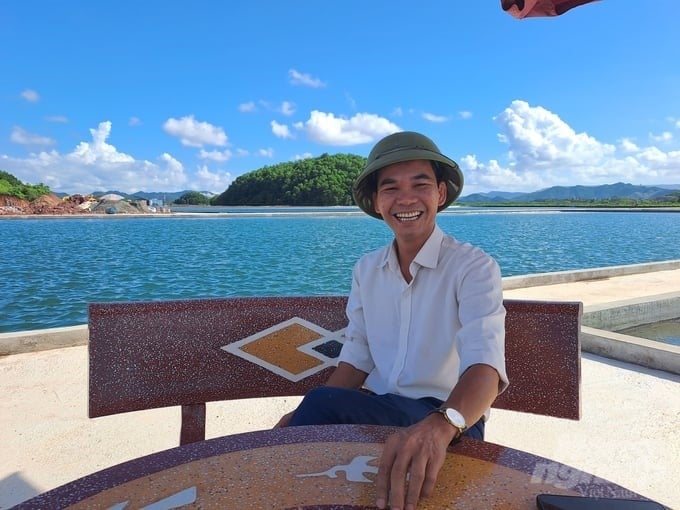
Mr. Manh is next to the water storage pond for shrimp farming, where the water is as green as in the swimming pools in resorts. Photo: Viet Cuong.
Quang Ninh's farmed shrimp output increased to a record
According to the Quang Ninh Department of Agriculture and Rural Development, this year, although the shrimp farming area in the province did not increase, output increased by nearly 13% over the same period last year and reached more than 56% of the yearly plan. This is the record-highest increase ever, contributing greatly to the growth of the aquaculture field.
Currently, the province is developing two key national-level products: whiteleg shrimp and giant tiger prawn, mainly concentrated in Mong Cai, Tien Yen, Dam Ha, Cam Pha, and Quang Yen cities. These localities have large farming areas, with industrial shrimp farming models in the direction of improved extensive, intensive, and super-intensive farming, applying advanced technology, and bringing high productivity.
In particular, the model of super-intensive shrimp farming in greenhouses and the model of shrimp farming in round floating tanks have an area of about 100 hectares (accounting for 1.3% of the shrimp farming area); the model of shrimp farming with 2-3 stages and little water change and the model of shrimp farming in sustainable earthen ponds have an area of about 150 hectares (accounting for 2% of the shrimp farming area); and the model of applying biological products to environmental and disease management is applied in most shrimp farming facilities.
These models are yielding 70–80 tons/ha/crop (particularly some models reaching over 100 tons/ha), with profits reaching VND 1–2 billion/ha.
Translated by Huyen Vu Thu
/2025/06/17/3942-2-143243_548.jpg)
(VAN) Recently, in Sweden, the Secretary of the Binh Dinh Provincial Party Committee presented the Investment Registration Certificate for the 'Polyester Fabric Recycling Complex' project to SYRE Impact-AB Company.
/2025/06/12/3721-2-202745_83.jpg)
(VAN) TH made an impression at Seoul Food 2025 with its line of natural beverages, paving the way for Vietnamese food products to enter the South Korean market.
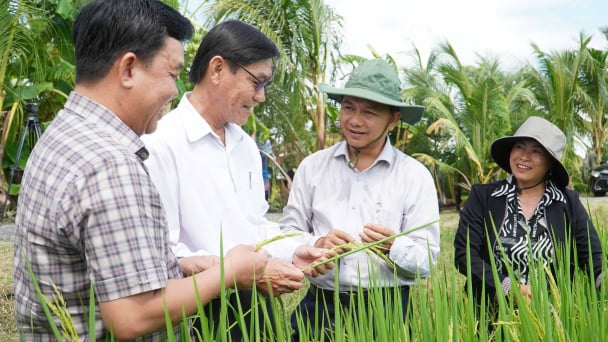
(VAN) Soc Trang's success in rice exports stems from a strategy of developing fragrant and specialty rice cultivation areas and standardizing production toward low-emission practices.
/2025/06/11/1311-5-120811_839.jpg)
(VAN) The pig farming industry is facing the challenge of comprehensive restructuring to meet requirements for quality, safety, traceability, and market expansion both domestically and for export.
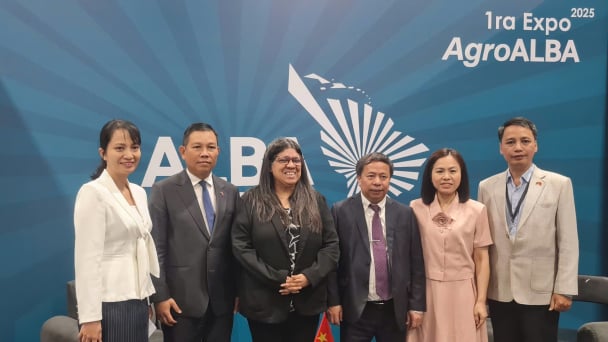
(VAN) Vietnam considers participating in ALGROALBA in order to expand agricultural production, coordinate the assessment and effective exploitation potential land.
/2025/06/05/5314-1-184727_407.jpg)
(VAN) From seemingly worthless fish scales and skin, enzymes and lactic ferments can transform by-products into peptides, opening a sustainable, effective business direction and elevating Vietnamese seafood.
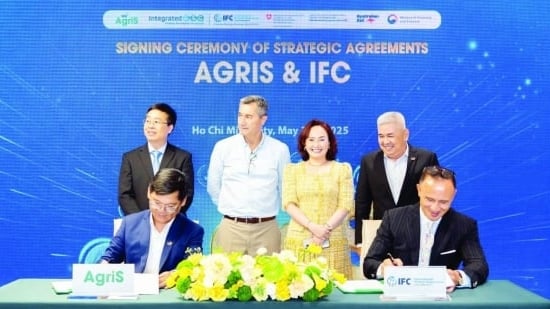
(VAN) TTC AgriS and IFC signed a strategic partnership to develop a sustainable agricultural value chain, aiming to achieve the Net Zero target by 2035.